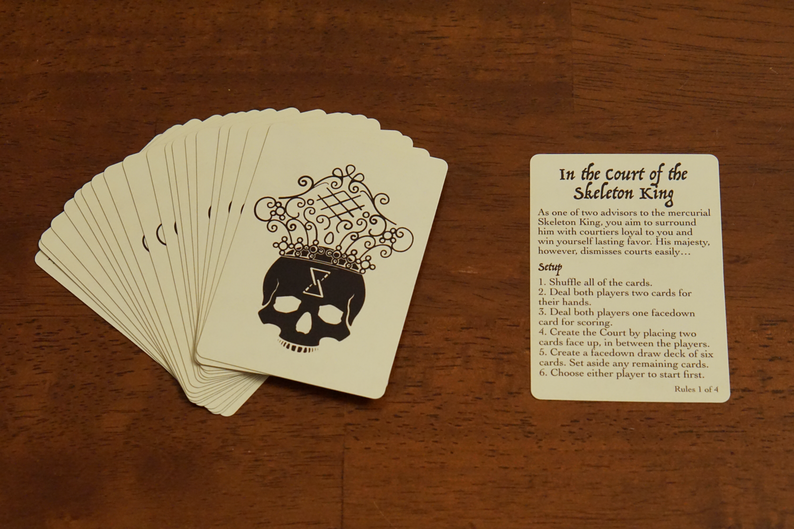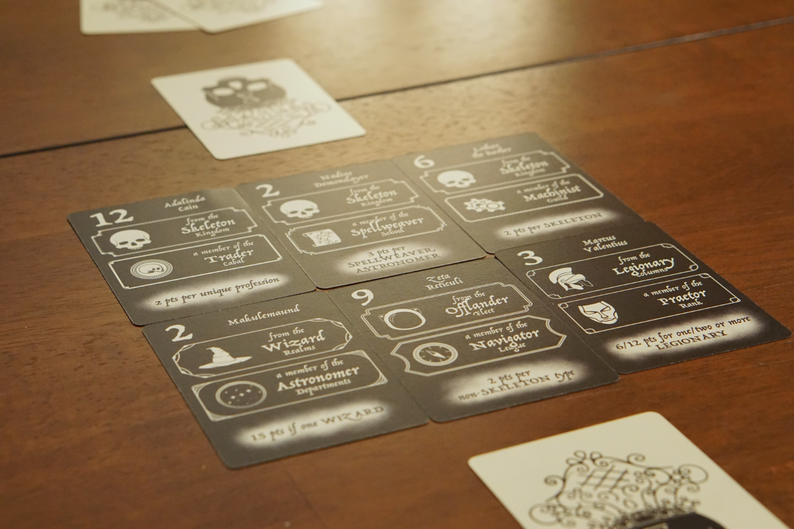In The Court of the Skeleton King: Design Diary

In The Court of the Skeleton King is the first microgame I completed. The project started out as an exercise to see what I could do with the microgame format (18 playing cards) and as a break from a larger analog idea I had been spinning my wheels in for a few months.
I cannot remember the original seed of the idea, but I wanted to do a kind of dramatic courtly politics game, imagining the players as two petty advisors vying for the favor of the eponymous Skeleton King. I also wanted to try something with a bit more of content design instead of a pure system, because the project I was trying to cool off from was very system forward and it was cooking my brain inside my skull.
You can print and play the game at the link above, but as a quick overview: all eighteen cards are courtiers, each with a scoring value, a type and profession, and a scoring condition. Players hold two cards in their hand for their values, one secret card in front of them as their scoring condition, and share a pool of cards as the triggers for the scoring condition. In the game they can exchange cards with their hand from the shared pool, take cards from the pool to their scoring condition, or add new cards to the pool.

At the center of the game is a three part imbalance/see-saw that the player will have to figure out as best they can. Cards held in their hand are the actual points you score, but if the value you hold higher than what your actual score is (dictated by the scoring card), you score nothing. Maximizing your score means altering the shared pool of cards by taking them in your hand or adding in more from the deck. You can change your scoring condition outright but this gives away how you will score cards to your opponent.
From a design process perspective, this central imbalance is what crystallized the design for me, and was interesting from the jump. Most of testing and iteration involved massaging a lot of numbers and card distribution, and finalizing the game end conditions. Here the biggest adjustments were adding a concede rule, and figuring out that the game end was most dramatic being tied to the deck running out. Adding in one last jolt of new information sometimes swings the game in a dramatic or amusing way.
The distinct design idea that Skeleton King taught me was that unsolvable equations are the juice that drives a lot of games I enjoy. Every action to strengthen your position in one area can weaken or compromise your position in another. Having two interlinked positions is interesting, but three can start to produce a double-pendulum effect, with chaotic results being especially interesting.
Overall I'm happy with the result! It's a hard game to describe, it's mostly 'hand management' but enough quirks that I think it feels like goofy courtly drama, with skeletons and wizards and astronauts. I'm mostly very happy with how solid it feels for a microgame and encouraging me to continue making these.
why is the name like that? i like goofy long names